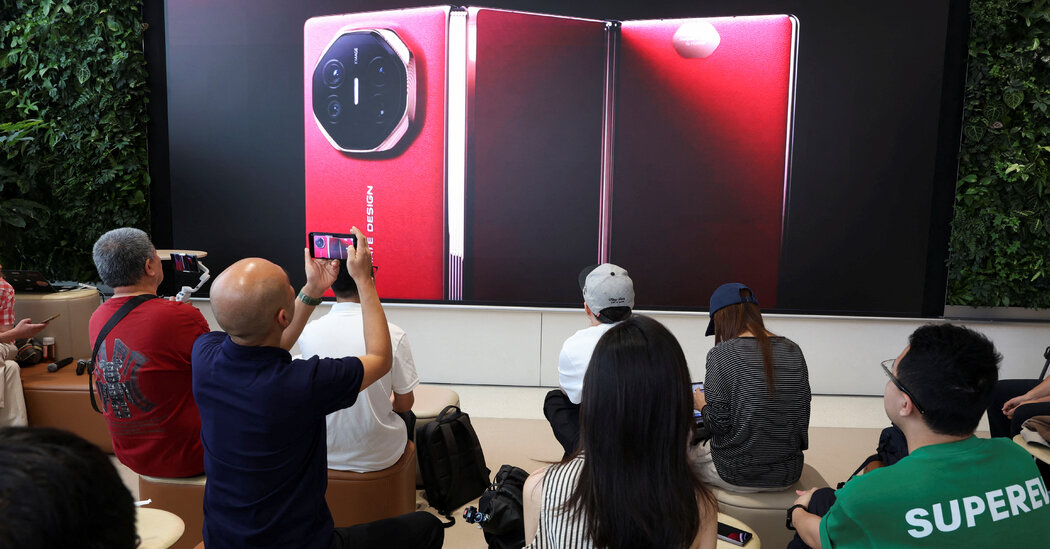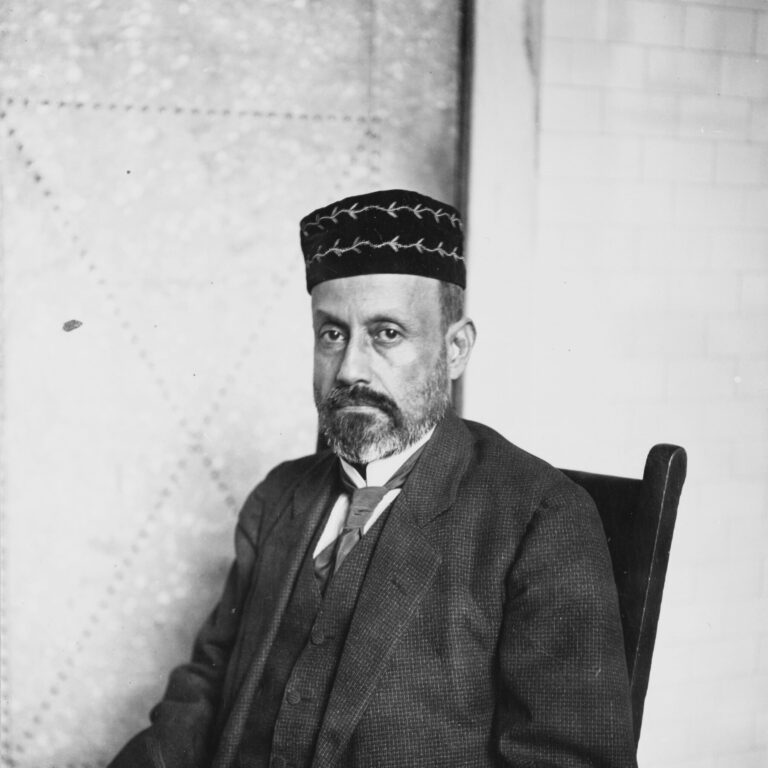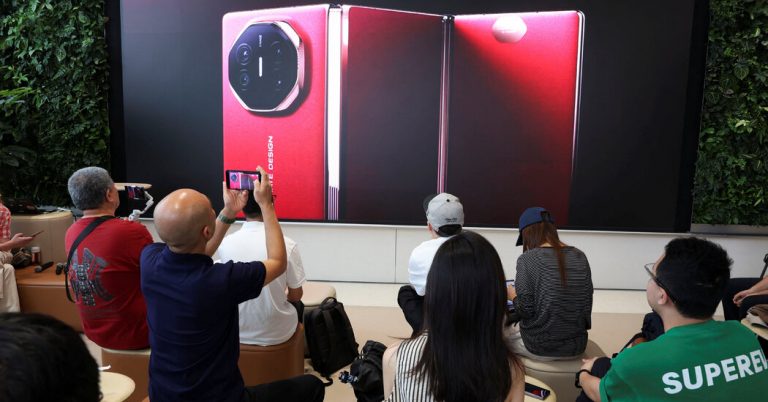Over the course of successive administrations, the U.S. government has used harsh trade restrictions to try to stifle Chinese telecom giant Huawei. In turn, the company never misses an opportunity to prove it’s still standing.
Last year, at the end of a visit to China by Gina M. Raimondo, the U.S. Commerce Secretary, Huawei unveiled a smartphone powered by an advanced semiconductor made in China. The chip was exactly the kind of technology that the United States, in an effort led by Ms. Raimondo, had sought to block China from developing.
Huawei’s Mate 60 Pro phone was heralded in China as a national champion’s triumph over American constraints. It sold out in minutes on Chinese e-commerce platforms. Many shoppers chose to bundle their purchase with a phone case emblazoned with a photo of Ms. Raimondo’s face.
Huawei made another stab at the headlines in China’s tech hub of Shenzhen on Tuesday, announcing a new device just hours after Apple unveiled its iPhone 16 in California. Huawei’s latest phone, the Mate XT, has a new twist: It can fold — twice.
The tablet-sized device folds along two vertical seams to fit the size of a typical phone. It is the first commercially available trifold smartphone. It comes in two colors, red and black, and will go on sale on September 20.
“This is something that everyone has thought of but never been able to do,” said Richard Yu, president of Huawei's consumer group. “I've always dreamed of putting our tablet in your pocket, and we've done it.”
The Mate XT, with a screen measuring 10.2 inches diagonally, features AI-powered translation, messaging and photo editing. Mr. Yu also unveiled a slim keyboard that folds in half to match the phone. He showed the audience how he carried both together in his suit jacket pocket.
Starting at $2,800, the Mate XT is priced like a luxury product.
Since launching the Mate 60 Pro last year, Huawei has begun chipping away at Apple's decades-long dominance of China's high-end smartphone market.
While the trifold phone is gaining popularity, Huawei has yet to unveil its latest iPhone rival, the next-generation Mate 70.
In recent years, Huawei has launched its products in September, which is also the month when Apple usually unveils new iPhones.
Huawei also used the events to commemorate the 2021 release of Meng Wanzhou, a senior executive and daughter of the company's founder who had been detained in Canada after the company was accused of violating U.S. sanctions. Her case has become a point of geopolitical contention, and her return has received widespread attention in China.
Analysts said the Mate 70's launch was slowed by chip production restrictions at the country's top chipmaker, state-backed Semiconductor Manufacturing International Corporation of China, or SMIC.
The company was behind the chips that helped Huawei take the world by surprise last year. But the technology used to make those chips is expensive and prone to defects, making them difficult to produce in large volumes.
Huawei is relying on SMIC's most advanced technology for three of its product lines, including its new trifold phone, said Joanne Chiao, an analyst at TrendForce, a market research firm.
Huawei has not confirmed a release date for the Mate 70. SMIC did not respond to a request for comment.
Huawei was once one of the world’s leading smartphone brands and a maker of 5G telecommunications equipment. Its share of the global smartphone market plummeted after the Trump administration in 2019 decided to limit its access to critical technologies, including semiconductors. Further sanctions from the United States and its allies further eroded the company’s profits. But Huawei staged a comeback last year, posting its fastest growth in four years, driven in part by sales of the Mate 60 Pro.
According to Linda Sui, senior director at TechInsights, a market research firm, the new foldable phone represents Huawei's attempt to demonstrate its leadership despite the uncertainty over the Mate 70's release date.
“Huawei still tried to do something to save face, to make people believe that it was comfortable competing side by side with Apple,” Ms. Sui said.
For a decade, China accounted for about 20 percent of Apple's total sales. It was the largest market for the iPhone after the United States.
But Apple's market share in China has fallen sharply in the first half of this year. Even offering iPhones at a discount, a rare move for Apple, hasn't been enough to reverse the decline.
In the quarter ending in June, Apple dropped out of the top five selling brands in China, according to research firm Canalys. It was the first quarter in years in which the top-selling smartphones in China were all made by domestic companies.
Since the Mate 60 launched, Apple has lost nearly a quarter of its market share in high-end smartphones, Ms. Sui said. That share has been taken over by Huawei.
Apple faces additional challenges: Chinese consumers’ reluctance to spend as the economy stumbles, and growing government pressure to shift people away from devices made by U.S. companies.
Many consumers are holding on to their phones longer rather than splurging on incremental upgrades. Apple is betting that new AI-powered software will motivate people to spring for the iPhone 16.
Inside China, the government is carefully regulating access to AI products like some of the new features Apple is outlining. Apple has said it plans to partner with OpenAI, the American AI leader, on some of this technology. But to make it available in China, Apple will likely need to find a Chinese partner company.
An obvious choice would be Baidu, the Chinese search giant. Samsung, the South Korean electronics maker, has partnered with Baidu on versions of its new AI smartphone that were released in China this year.
Apple, which did not respond to a request for comment, did not explain how it will launch its artificial intelligence software in China.
Lori Chang, a senior analyst at Isaiah Research, a market research firm, said the trifold phone was unlikely to give Huawei a big boost in sales. The device is expensive, and because the foldable screen is difficult to make, the company is expected to produce only a few hundred thousand units. Huawei launched its first foldable phone with a seam in 2019.
In Shenzhen on Tuesday, Mr. Yu, a Huawei executive, said the phone's high price reflected how difficult it was to produce. “We hope to reduce costs by improving the process after the market launch,” he said.
However, as of Tuesday, more than four million people had signed up on Huawei's website to be notified when the Mate XT went on sale.
Claire Fu contributed to the report from Seoul.





